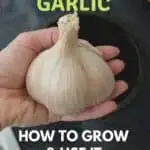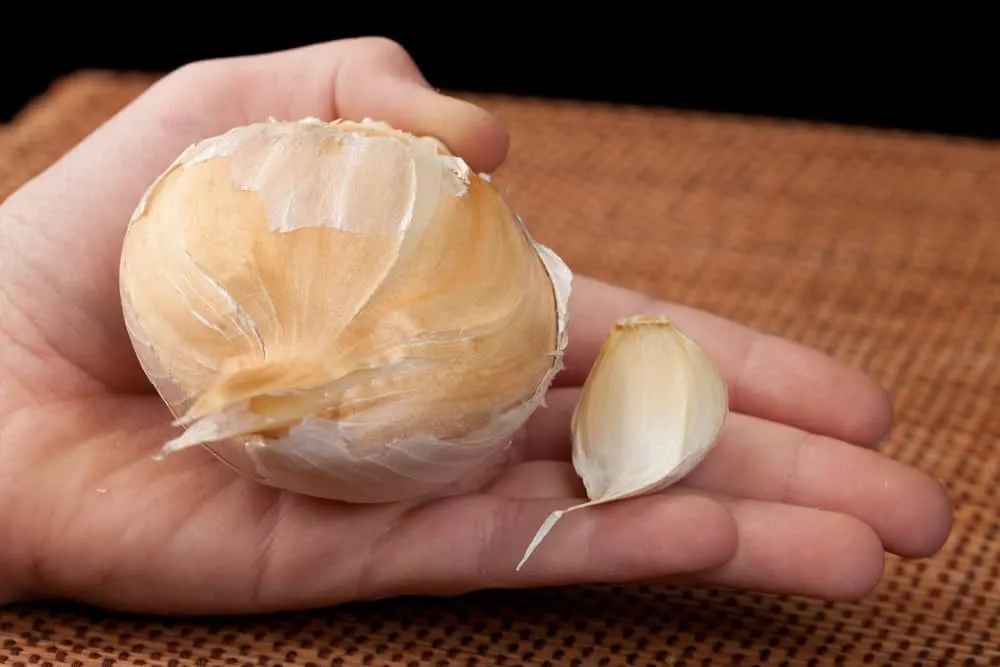
If you are looking for something a little different to grow in your garden, elephant garlic is for you.
Unlike regular garlic, elephant garlic is a perennial plant that can remain in your growing areas year after year.
It can be a great addition to wildlife gardens, perennial beds or polycultures, and can be grown in a wide range of different climates and conditions.
Related Reading: How To Plant Garlic In The Fall
What Is Elephant Garlic?
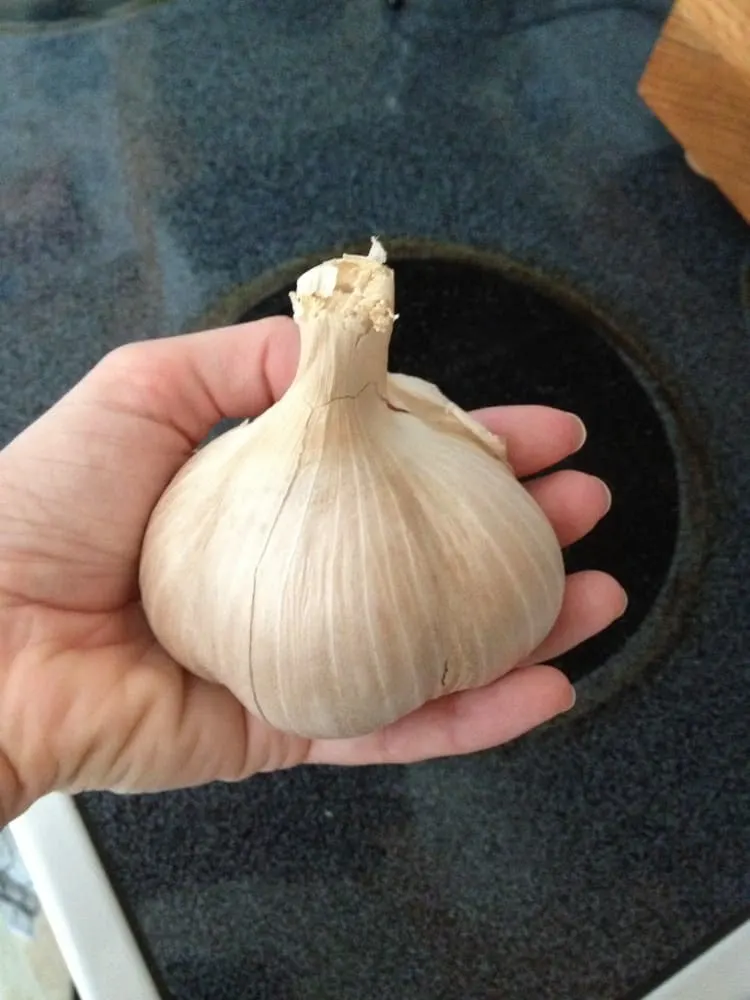
Elephant garlic (Allium ampeloprasum) is a relative of onions, leeks and garlic, and has most in common with the last two of these. Like the leek, it has a tall stalk and flat leaves.
It is garlic-like in flavour and, like garlic, forms a bulb that is made up of cloves.
As you might have guessed from the name – the bulbs are, however, much larger than those of regular garlic varieties.
The pleasingly and outlandishly large garlic bulbs of elephant garlic have an internal core made up of large cloves with papery skin. On the outside of the bulbs, there are also much smaller bulbils with a hard shell.
The internal cloves are used for culinary uses and for propagation. When planted, these will usually form new bulbs with cloves in their first year, providing that the season is long enough for them to do so.
The bulbils are often discarded. But these can also be planted. When placed in the ground, or in containers, these bulbils will produce a non-flowering plant in their first year. The bulbil will grow into what is essentially a single clove.
If left in the ground, this will behave like the cloves from the original bulb, and will divide into multiple separate cloves and produce a flowering head.
If left alone, and not harvested, elephant garlic will survive for multiple years, spreading into a clump with many flowering heads.
These are ornamental and can look great in the garden. What is more, they can also be great for encouraging wildlife and for pest control.
Where Can You Get Elephant Garlic?
Elephant garlic is generally very easy to source. You can find it at many garden centres and plant nurseries.
Gardeners of your acquaintance may also be prevailed upon to offer up a few bulbs for you to cultivate, especially if they already grow plenty of their own.
If you do struggle to source elephant garlic in your local area, you can find plenty of suppliers online. Here are a few examples:
Kentucky’s Best Elephant Garlic @ Amazon.com
Elephant Garlic – Morel Distribution Company @ Amazon.com.
You can also find a range of independent sellers on other online marketplaces.
Even when buying online, it is best to source your elephant garlic from as close to home as possible, as it will be more likely to be suited to growing in your particular area.
How To Grow Elephant Garlic
Like regular garlic, elephant garlic is sown in either fall, for overwintering, or in the late winter/ early spring.
If winters are relatively warm, or you can provide winter cover, it is better to plant in fall to provide a better chance for the plants to divide into cloves rather than just producing a mono-bulb.
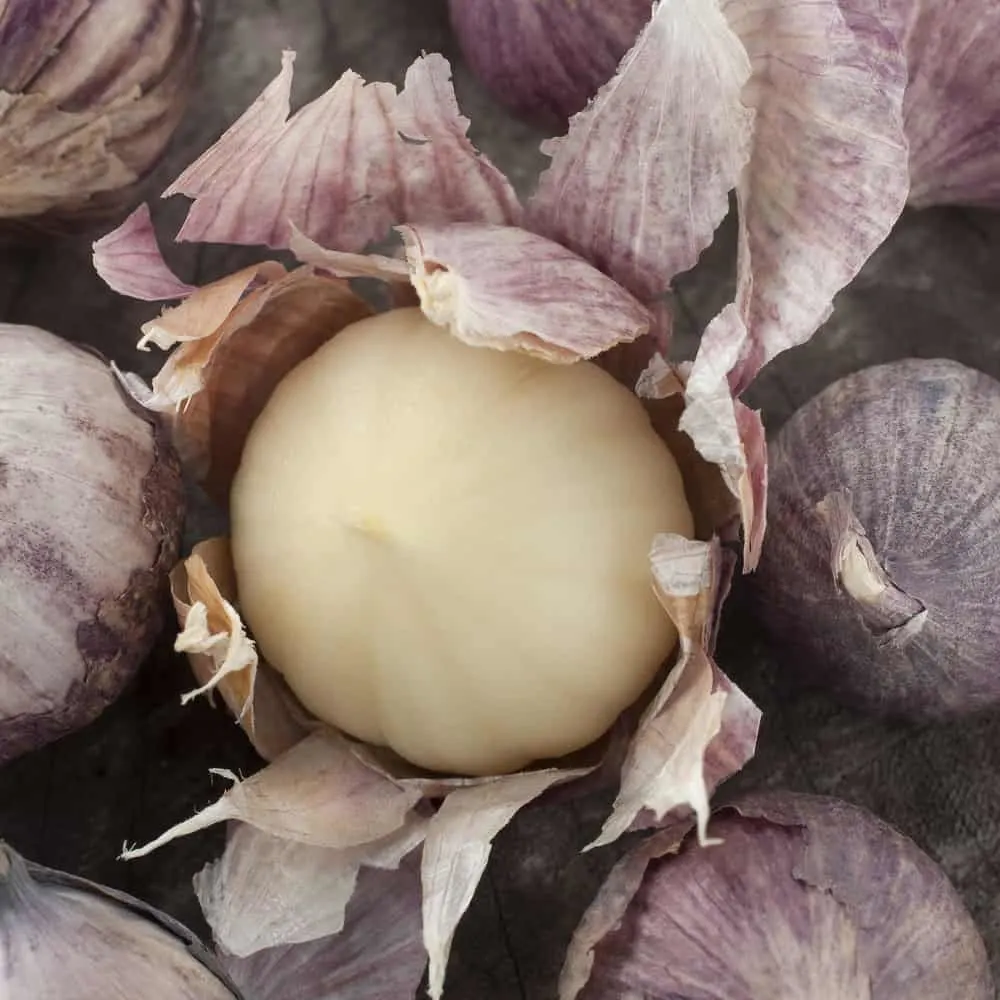
First, choose a location for your elephant garlic.
It is better suited to wet conditions than regular garlic, though will not like waterlogging in winter. It will do best in a moist yet relatively free-draining area in full sun.
The ideal soil for these plants will have a neutral pH of around 6.0-7.0. It is a plant that can tolerate fairly high winds, but not maritime exposure.
Prepare a growing area, top dressing the soil with some good quality compost (home-made in your garden) and/or other organic matter.
Make sure that the area is free from weeds, as elephant garlic does not do well with competition.
Planting:
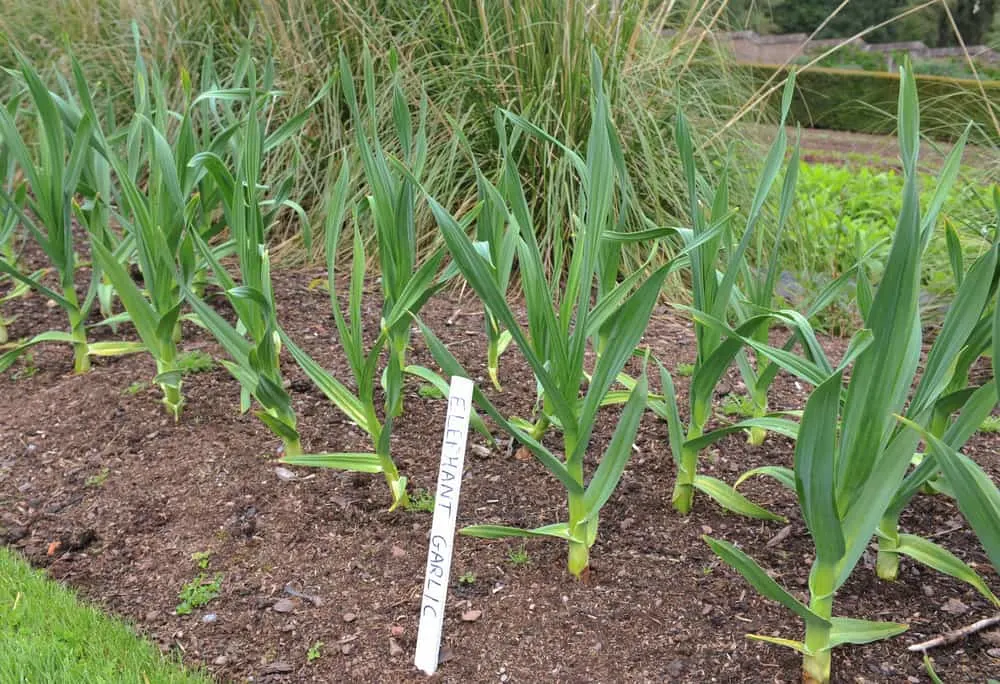
Take the elephant garlic bulbs and split them carefully apart, retrieving the large cloves and the bulbils for replanting.
(Make sure that you know where you have planted the bulbils, so that you do not try to harvest these in the first year but leave them in situ to mature.)
Take each clove and plant each one around 10cm deep. Use a dipper or a stick or branch to make the holes, or plant into the base of a furrow. Do not be tempted to force the cloves into the soil with your hands as this could damage them.
Make sure that you place the cloves with the pointed end upwards, and the root end facing down. They should be at least 20cm apart to give them the space they need to grow.
Cover over the holes or furrow with soil and water them in.
Mulch your bed with straw, or other organic material to protect the soil, protect roots from frost, conserve moisture and keep weeds down.
Care:
Continue to water regularly during dry spells, or if growing undercover.
Cut off flowering stalks (or scapes as they are sometimes known) of elephant garlic that you intend to harvest and use them in your kitchen. They make an excellent pesto, and are also mild enough to use in stir fries or salads. You can use them anywhere that you would like a mild garlic flavour.
Cutting off scapes allows your plants to focus on bulb growth. However, if you want to use elephant garlic for a wildlife garden or ornamental reasons, you could allow some of your plants to flower.
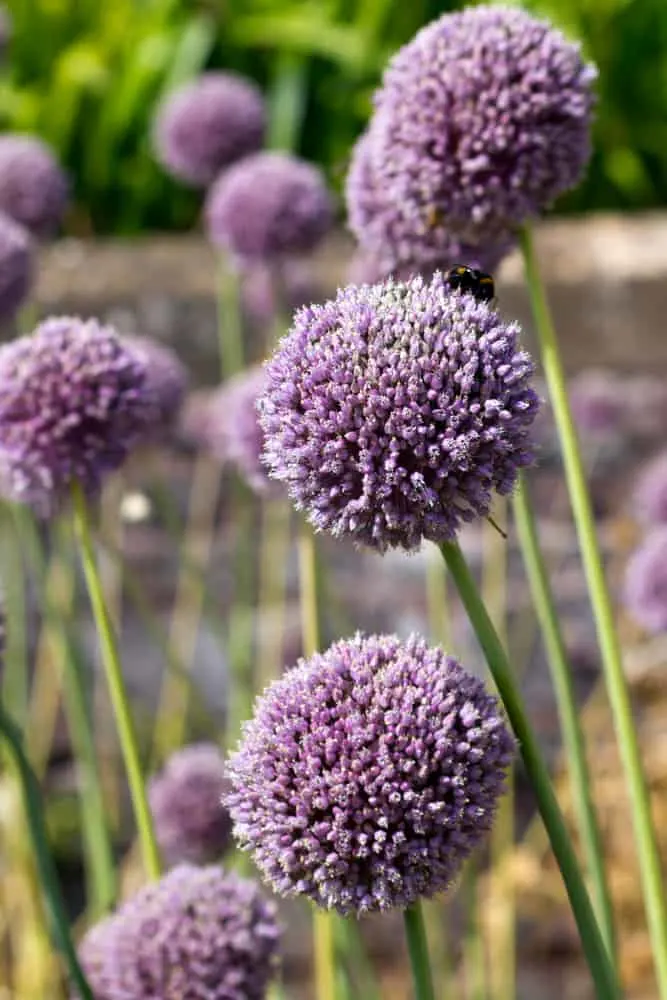
Certain diseases and pests can affect elephant garlic, but a rich biodiversity in your garden, good watering habits and good airflow between your plants should reduce the incidence of any problems.
Companion Planting
Elephant garlic, like regular garlic and other members of the allium family, can be a useful companion plant for a range of other crops.
It is particularly beneficial due to its strong smell, which can confuse or repel a range of pest species.
Planting chamomile close to alliums is said to improve their flavour, and while this is merely anecdotal, you may like to give it a go.
Harvesting Elephant Garlic
Once mature, elephant garlic can reach a height of just under 1m.
Fall planted elephant garlic will usually be ready for harvest from around eight months after planting – the following summer.
Elephant garlic planted in spring can be harvested after around 90 days – though it is likely that the harvest will only be in the form of large, single bulbs.
As with regular garlic, elephant garlic is ready for harvest when most of the leaves on the plants have turned yellowish brown, and begun to flop over.
Gently remove the bulbs from the ground as and when they are required.
One of the good things about elephant garlic is that, like leeks, it can be left in the ground – unlike regular garlic which can tend to rot if left unharvested for too long.
Storing Elephant Garlic
In order to store your elephant garlic, it will first have to be left to dry and cure for a few weeks. Brush off as much soil as you can from the bulbs, but do not wash them. Then let them sit in a cool, dark spot with good air flow.
After curing the elephant garlic, cut off most of the stems and long roots and store them as you would store regular garlic.
You should choose a relatively cool and low-humidity location and maintain good ventilation at all times.
Making a Braid To Store Alliums
One way to store elephant garlic (as well as other garlic and onions) is to form braids which can be hung up in a suitable spot. To make braids, leave the dry stems at the top of each of the bulbs.
You can then braid the garlic into a three-way braid, starting with three bulbs and then adding in a new bulb every time you have done the left to middle, right to middle, left to middle manoeuvre. This can be an extremely attractive storage solution.
If you would like to make a braid, but the stems are too broken or fragile for the above, you can also make something that looks very like a braid. First:
- Make a loop of natural twine that is long enough to make a braid of the right length and hang it from a hook or nail.
- Starting at one end of the loop, hold the two sides close together. Wind the stem of a bulb in a figure of eight pattern around these two side strings.
- Take another bulb and, holding the two sides of the loop in place, wind the stem of this second bulb in a figure of eight pattern above the first.
- Continue until all the garlic bulbs are attached to the twine.
When stored in optimal conditions, elephant garlic should keep for up to eight to ten months. In less ideal conditions, such as areas with high humidity, you should generally plan to use stored elephant garlic within three or four months.
Of course, you could also consider using elephant garlic to make a range of canning recipes or preserves.
How To Use Elephant Garlic
Whatever else you do with the elephant garlic that you harvest, you should be sure to try some roasted. Many agree that roasting elephant garlic is the very best way to enjoy it.
Roasted Elephant Garlic
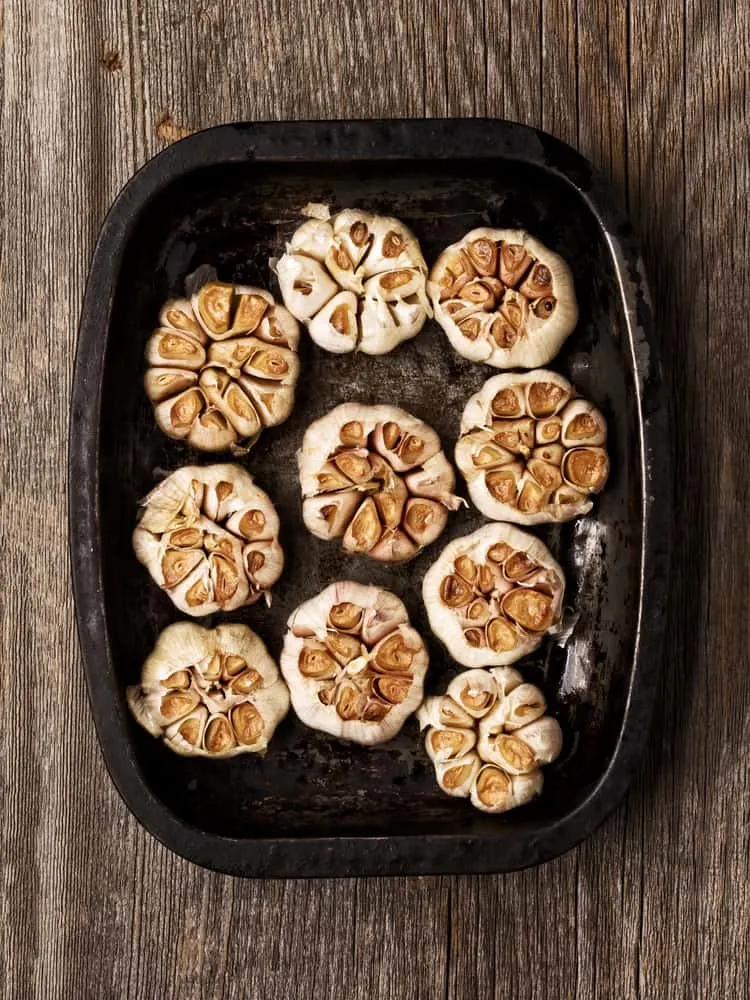
To roast elephant garlic simply:
- Cut a whole bulb in half horizontally.
- Arrange on a baking tray, drizzle the exposed cloves with olive oil and season with salt and pepper to taste.
- Put the halves of the bulb back together and wrap loosely in foil.
- Place in an oven that has been pre-heated to 200C.
- Leave for 40 minutes to an hour (depending on the size of the bulb). Turn down the oven to 180 and continue to cook for a further 20-30 minutes for a more caramelized taste.
- Remove from the oven and use in a wide range of different recipes. Spread it on bread, serve as a side for meats or barbecue dishes, or add it to a range of sauces, soups or stews.
Of course, there are also plenty of other ways to enjoy your elephant garlic.
Since the flavour is generally somewhat milder than regular garlic, even those who do not like too much of the pungent crop tend to enjoy it.
Pin This To Save For Later
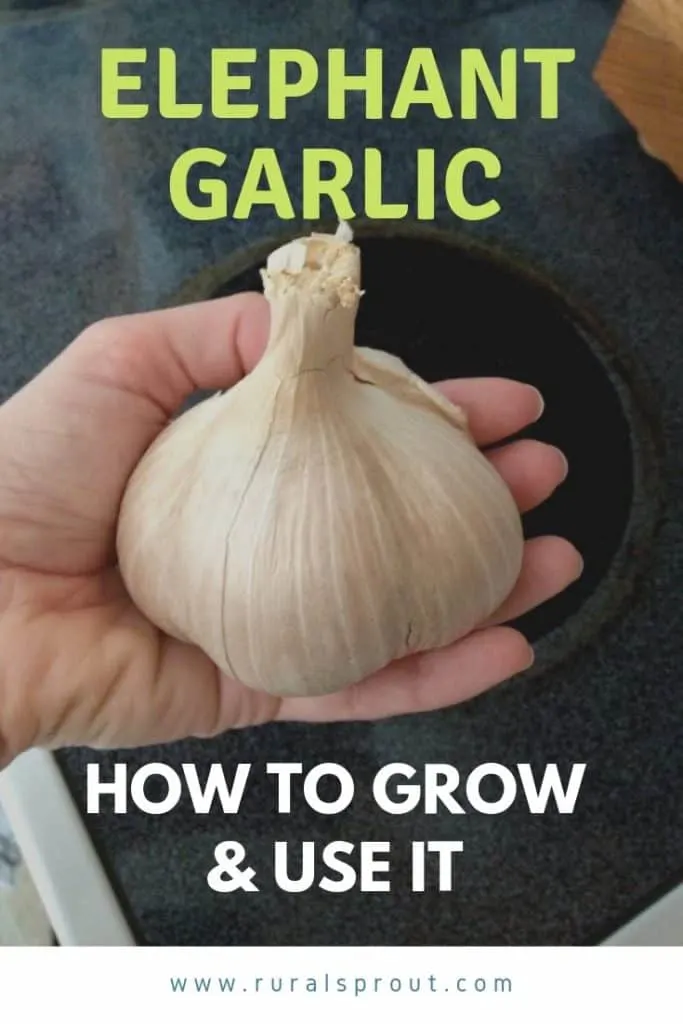
Read Next: 5 Reasons To Grow Nasturtiums & 10 Delicious Recipes

Get the famous Rural Sprout newsletter delivered to your inbox.
Including Sunday musings from our editor, Tracey, as well as “What’s Up Wednesday” our roundup of what’s in season and new article updates and alerts.


